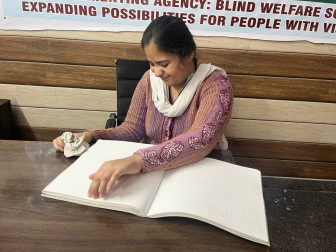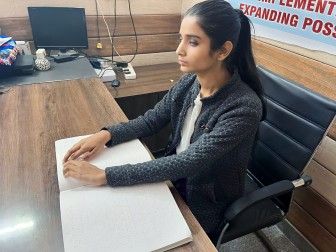Accessible housing is crucial for ensuring that visually impaired individuals live comfortably and independently. As our understanding of inclusive design evolves, innovative solutions are emerging to create shelters that cater specifically to the needs of those with visual impairments. This blog explores the latest advancements and strategies for developing accessible and supportive housing solutions.
Before delving into innovative solutions, it's important to understand the specific needs of visually impaired individuals:
1. Safe Navigation: Clear and safe pathways are essential. This includes avoiding obstacles and ensuring that navigation within the home is intuitive and straightforward.
2. Accessibility Features: Essential features like tactile markings, braille labels, and auditory cues enhance usability and independence in the home environment.
3. Comfort and Safety: Housing should provide a comfortable living space that accommodates the unique sensory experiences of visually impaired individuals while ensuring safety.
1. Smart Home Technology: Smart home technologies are transforming how visually impaired individuals interact with their living spaces. Key innovations include:
2. Tactile and Auditory Enhancements: Enhancing the sensory experience within the home is crucial for navigation and daily activities:
3. Accessible Design Features: Designing homes with accessibility in mind involves integrating features that accommodate the needs of visually impaired individuals:
4. Specialized Furniture and Layouts: Furniture and layout considerations play a significant role in creating accessible living spaces:
5. Community and Support Services: Creating supportive communities and offering additional services can further enhance the living experience:
1. Cost and Funding: Implementing advanced features and technologies can be expensive. Exploring funding options, grants, and subsidies can help make these solutions more accessible.
2. Awareness and Training: Educating designers, builders, and homeowners about the specific needs of visually impaired individuals is crucial for successful implementation.
3. Continuous Improvement: Ongoing feedback from visually impaired residents is essential for refining and improving accessible housing solutions.
Creating accessible shelters for the visually impaired involves a combination of innovative technology, thoughtful design, and supportive community resources. By integrating smart home technology, tactile and auditory enhancements, and specialized design features, we can build housing solutions that promote independence, safety, and comfort. As we continue to develop and implement these innovations, we pave the way for a more inclusive and accessible future for visually impaired individuals.
By contributing to our feature donation campaigns, you are not just supporting us,
you are fostering independence, education, and accessibility for the people with blindness.
We are providing free shelter, food and educational support to the abandoned visually impaired girls residing at BWS.
₹1146562
raised of ₹2000000 Goal
57%
3 Days left
573 Supporters
Maa and Papa weren’t the happiest when I was born. They thought I was a burden to them.
₹769463
raised of ₹2000000 Goal
38%
3 Days left
590 Supporters
The Walking Canes have proved a useful tool to millions of blind people in navigating their environments with confidence and ease.
At our organization, we provide a nurturing environment for visually impaired girls, helping them lead fulfilling lives despite their challenges.
The following stories highlight the transformative journey of these remarkable individuals within our organization.

Hailing from Delhi, Sneha came to Blind Welfare Society in July 2023.
.jpeg)
Hailing from a small village of Gwalior district, Madhya Pradesh, Archana came to Blind Welfare Society in July 2023

Chhavi’s journey is a testament to the transformative power of education and the invaluable support provided by the Blind Welfare Society.